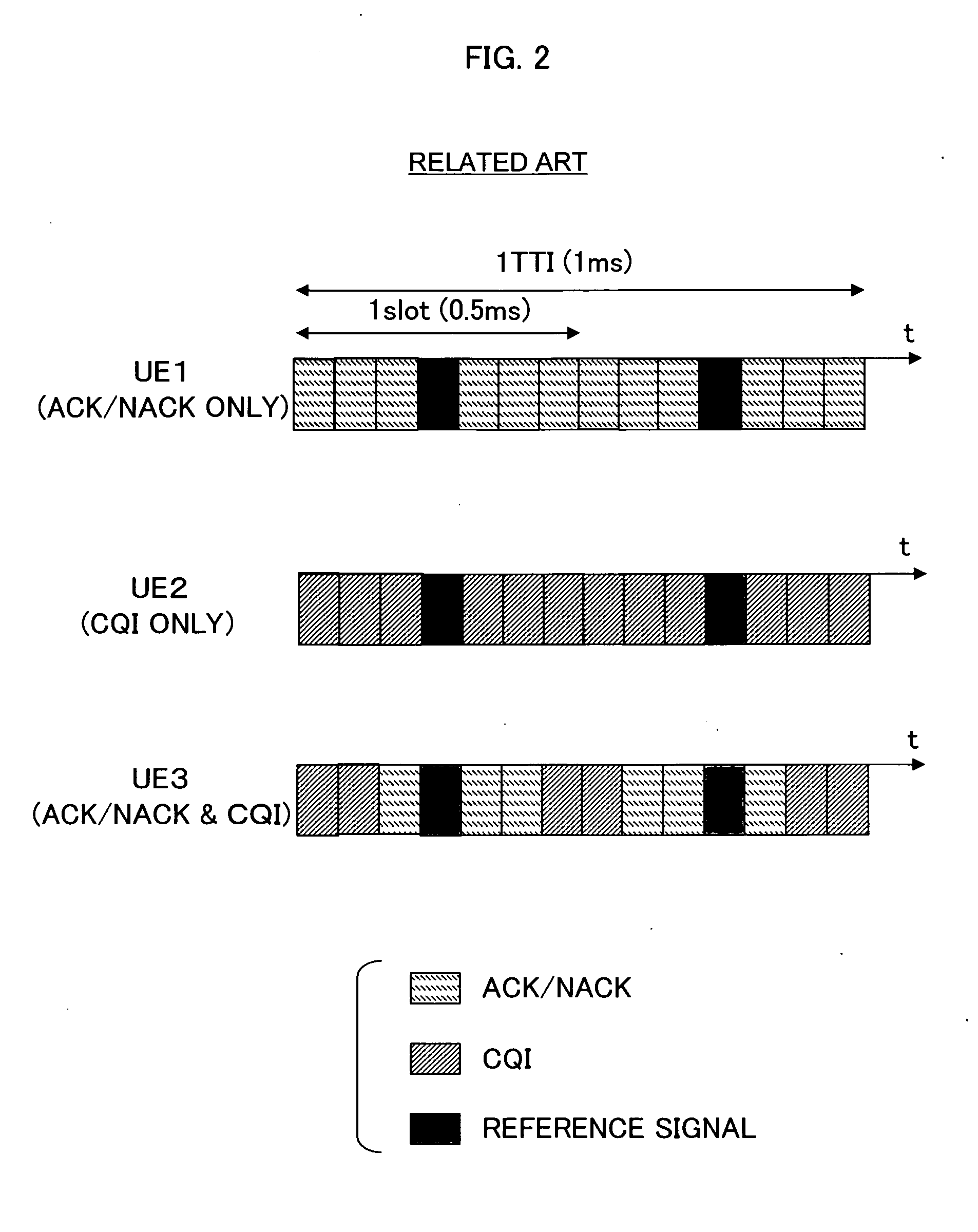Resource allocation control method and device in mobile radio communications system
- Summary
- Abstract
- Description
- Claims
- Application Information
AI Technical Summary
Benefits of technology
Problems solved by technology
Method used
Image
Examples
first exemplary embodiment
2. First Exemplary Embodiment
[0040]In a first exemplary embodiment of the present invention, a base station (also referred to as “NodeB”) takes initiative in controlling the ratio between control resources within a resource block, and in controlling the ratio between control and reference resources within a resource block.
2.1) Base Station
[0041]FIG. 3 is a block diagram showing a schematic configuration of a base station in a mobile radio system according to the first exemplary embodiment of the present invention. Here, it is assumed that the base station 100 accommodates N mobile stations (UEs) 1 to N.
[0042]At the base station 100, a radio communication section 101 demodulates an uplink control signal received from a mobile station, in accordance with a reference signal similarly received, and outputs the demodulated control signal and the reference signal to a control information extraction section 102 and a CQI measurement section 103 respectively. The control information extract...
second exemplary embodiment
3. Second Exemplary Embodiment
[0070]According to the above-described first exemplary embodiment, it is the base station that takes initiative in performing the control for apportioning the control and reference resources within a resource block. However, it is also possible that a mobile station takes initiative in performing similar control.
3.1) Base Station and Mobile Station
[0071]FIG. 9 is a block diagram showing a schematic configuration of a base station in a mobile radio system according to a second exemplary embodiment of the present invention. The base station in the second exemplary embodiment has a configuration similar to that of the base station in the first exemplary embodiment described with reference to FIG. 3, except that the base station in the second exemplary embodiment is not provided with the CQI measurement section 103. Therefore, in the second exemplary embodiment, those blocks having the same functions as in the first exemplary embodiment are denoted by the s...
third exemplary embodiment
4. Third Exemplary Embodiment
[0084]According to the above-described first and second exemplary embodiments, employed is a separate coding scheme by which, as shown in FIG. 4 or 10, the control signals CQI and ACK / NACK generated by the CQI generation section 205 and ACK / NACK generation section 206 respectively are encoded by the encoding sections 205a and 206a respectively (in which case a signal in each long block is multiplexed with others at LB level as shown in FIG. 7B or 12). However, the present invention is not limited to this scheme. It is also possible to employ Joint Coding by which multiple types of control signals are encoded by a single encoding section. According to this scheme, multiple types of control signals are multiplexed at bit level in each long block. Hereinafter, description will be given of the case where the joint coding scheme is employed in resource allocation control under the initiative of a base station as in the first exemplary embodiment. Note that th...
PUM
 Login to View More
Login to View More Abstract
Description
Claims
Application Information
 Login to View More
Login to View More - R&D
- Intellectual Property
- Life Sciences
- Materials
- Tech Scout
- Unparalleled Data Quality
- Higher Quality Content
- 60% Fewer Hallucinations
Browse by: Latest US Patents, China's latest patents, Technical Efficacy Thesaurus, Application Domain, Technology Topic, Popular Technical Reports.
© 2025 PatSnap. All rights reserved.Legal|Privacy policy|Modern Slavery Act Transparency Statement|Sitemap|About US| Contact US: help@patsnap.com



